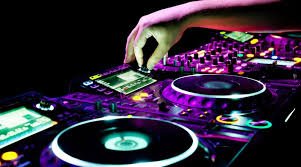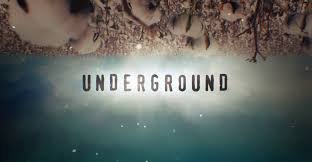
ekdctronic music genres
What Is Electronic Music?
Electronic music is a broad genre of music that primarily uses electronic instruments, synthesizers, drum machines, and computer software for composition and production. From underground clubs to international festivals, electronic music has become one of the most influential genres in modern music culture.
It’s more than just a sound—it’s a global movement, an art form, and a constantly evolving collection of subgenres that reflect innovation, emotion, and rhythm.
Why Electronic Music Has So Many Subgenres
Electronic music is diverse because of:
- Different production techniques
- Unique cultural influences
- Varying tempos, moods, and audiences
- Hybrid genres blending with hip-hop, rock, pop, and world music
Each subgenre offers its own atmosphere and experience, from chill and ambient to hard-hitting and high-energy.
Main Categories of Electronic Music
Let’s explore the most important and influential electronic music genres, along with their characteristics and cultural impact.
1. House Music
House music originated in Chicago during the early 1980s and is known for its steady 4/4 beat, deep basslines, and soulful vocals.
Key features:
- BPM (tempo): 120–130
- Influenced by: Disco, Soul, Funk
- Popular subgenres: Deep House, Tech House, Progressive House, Electro House
Well-known artists include: Frankie Knuckles, David Guetta, Deadmau5
🔗 Learn more about House Music on Britannica
2. Techno
Techno emerged from Detroit in the 1980s and is focused on machine-like rhythms, minimalism, and industrial vibes. It’s more mechanical and less melodic than house.
Key features:
- BPM: 125–140
- Emphasis on: Repetition, layers, build-ups
- Popular subgenres: Minimal Techno, Detroit Techno, Acid Techno
Artists to know: Carl Cox, Jeff Mills, Charlotte de Witte
3. Trance
Trance music originated in Germany and the UK in the early 1990s and is known for emotional melodies, uplifting progressions, and long build-ups that lead to powerful “drops.”
Key features:
- BPM: 130–145
- Focus: Hypnotic sounds, dreamy atmosphere
- Subgenres: Uplifting Trance, Psytrance, Progressive Trance
Top trance DJs: Armin van Buuren, Tiesto, Above & Beyond
4. Dubstep
Dubstep started in South London in the early 2000s and became globally popular for its wobble bass, syncopated rhythms, and dark mood. It gained mainstream attention through artists like Skrillex.
Key features:
- BPM: 140
- Known for: Heavy drops, wubs, bass modulation
- Subgenres: Brostep, Riddim, Deep Dubstep
Famous names: Skrillex, Zomboy, Excision
5. Drum and Bass (D&B)
Drum and Bass (also written as DnB) emerged from the UK rave scene in the early 1990s and is characterized by fast breakbeats, heavy sub-bass, and intense energy.
Key features:
- BPM: 160–180
- Complex drum patterns
- Subgenres: Liquid DnB, Jump-Up, Neurofunk
Key artists: Andy C, Noisia, Netsky
6. Ambient
Ambient music focuses on atmosphere over rhythm, often used for relaxation, meditation, or background environments. It is one of the calmest and slowest forms of electronic music.
Key features:
- BPM: Variable or none
- No strong beat or structure
- Emphasizes: Textures, pads, slow progression
Famous artists: Brian Eno, Aphex Twin (Selected Ambient Works), Moby
7. Electro
Electro music combines electronic funk with hip-hop elements, originating in the 1980s. It’s recognized by its use of drum machines, especially the Roland TR-808, and robotic vocals.
Key features:
- BPM: 120–135
- Robotic, retro-futuristic feel
- Often overlaps with breakdance culture
Pioneers include: Afrika Bambaataa, Kraftwerk, Drexciya
8. EDM (Electronic Dance Music)
While EDM is often used as an umbrella term, in pop culture it refers to high-energy festival music that blends house, trance, and electro.
Key features:
- BPM: 125–150
- Big builds and bass-heavy drops
- Focused on: Live shows, LED visuals, massive crowds
Popular EDM DJs: Martin Garrix, The Chainsmokers, Calvin Harris
9. Future Bass
Future Bass is a more recent genre that combines melodic synths, emotional chords, and punchy beats. It’s softer than dubstep but still energetic.
Key features:
- BPM: 130–160
- Use of: Chords, side-chain compression, vocal chops
- Popular with: YouTube creators, festivals, and gamers
Artists: Flume, San Holo, Illenium
10. Industrial and Experimental
This category includes darker, more avant-garde styles that combine electronic elements with noise, metal, or gothic aesthetics.
Key features:
- BPM: Highly variable
- Focus: Unconventional sounds, aggressive textures
- Often used in film scores, video games, and performance art
Important names: Nine Inch Nails, Front Line Assembly, Autechre
The Role of Technology in Electronic Music
Electronic music wouldn’t exist without technology. Key innovations include:
- DAWs (Digital Audio Workstations) like Ableton Live, FL Studio
- MIDI instruments
- Synthesizers (Moog, Roland, Korg)
- VST plugins and virtual instruments
- AI-powered tools for beat generation and mastering
Today, even mobile apps allow musicians to produce entire tracks from their smartphones.
Conclusion: Why Electronic Music Will Keep Evolving
Electronic music is one of the most flexible and forward-thinking genres in the world. With constant innovation in technology, sound design, and global culture, electronic music genres will keep blending, growing, and surprising us.
Whether you enjoy the uplifting energy of trance, the aggression of dubstep, or the peacefulness of ambient music, there’s an electronic subgenre that fits your mood, lifestyle, and purpose. It’s not just music — it’s a universe of sound.






